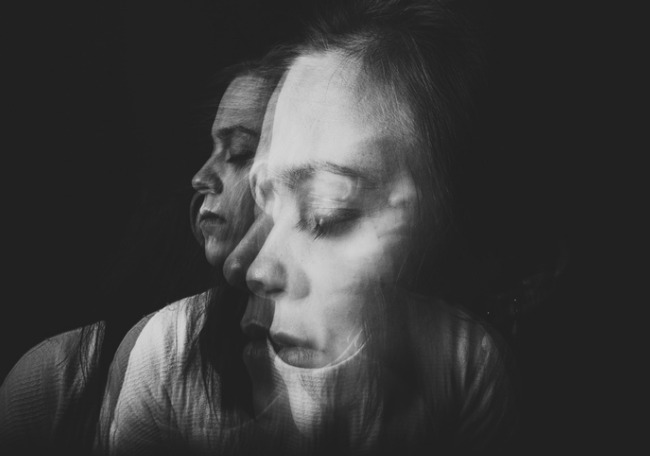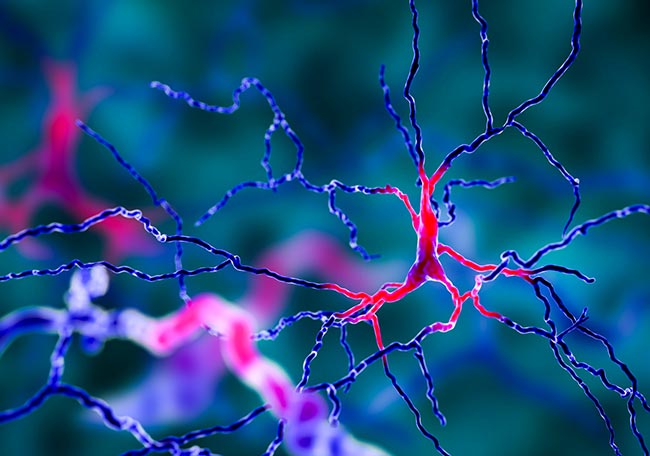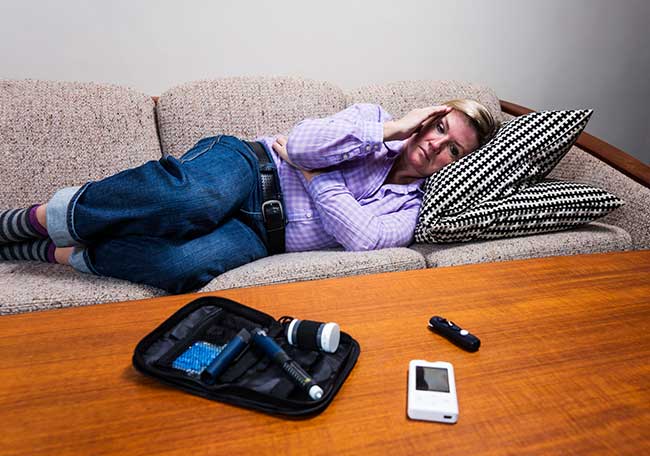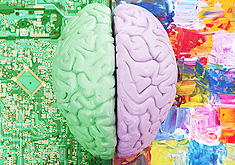Guías para la depresión mixta

1. American Psychiatric Association. Diagnostic and Statistical Manual of Mental Disorders, 5th ed. Washington, DC: American Psychiatric Association; 2013.
2. Benazzi, F. Reviewing the diagnostic validity and utility of mixed depression (depressive mixed states). Eur Psychiatry. 2008; 23(1):40–48; Epub ahead of print Aug 30, 2007.
3. Hu, J, Mansur, R, McIntyre, RS. Mixed specifier for bipolar mania and depression: highlights of DSM–5 changes and implications for diagnosis and treatment in primary care. Prim Care Companion CNS Disord. 2014; 16(2): pii: PCC.13r01599. Epub ahead of print Apr 17. https://www.ncbi.nlm.nih.gov/pmc/articles/PMC4116292/. Accessed January 29, 2017.
4. Sato, T, Bottlender, R, Sievers, M, Schröter, A, Kleindienst, N, Möller, HJ. Evaluating the inter-episode stability of depressive mixed states. J Affect Disord. 2004; 81(2): 103–113.
5. Vieta, E, Valentí, M. Mixed states in DSM–5: implications for clinical care, education, and research. J Affect Disord. 2013; 148(1): 28–36; Epub ahead of print Apr 2. http://www.jad-journal.com/article/S0165-0327(13)00232-2/pdf. Accessed January 29, 2017.
6. Solé, E, Garriga, M, Valentí, M, Vieta, E. Mixed features in bipolar disorder. CNS Spectr. 2017: 1–7; Epub ahead of print.
7. Cerullo, MA, Strakowski, SM. A systematic review of the evidence for the treatment of acute depression in bipolar I disorder. CNS Spectr. 2013; 18(4): 199–208; Epub ahead of print Mar 18. https://www.ncbi.nlm.nih.gov/pmc/articles/PMC3688656/. Accessed January 29, 2017.
8. Cleare, A, Pariante, CM, Young, AH, et al. Evidence-based guidelines for treating depressive disorders with antidepressants: a revision of the 2008 British Association for Psychopharmacology guidelines. J Psychopharmacol. 2015. 29(5): 459–525; Epub ahead of print May 12. http://journals.sagepub.com/doi/pdf/10.1177/0269881115581093. Accessed January 29, 2017.
9. Connolly, KR, Thase, ME. The clinical management of bipolar disorder: a review of evidence-based guidelines. Prim Care Companion CNS Disord. 2011; 13(4): pii: PCC.10r01097. https://www.ncbi.nlm.nih.gov/pmc/articles/PMC3219517/. Accessed January 29, 2017.
10. Fountoulakis, KN, Kontis, D, Gonda, X, Siamouli, M, Yatham, LN. Treatment of mixed bipolar states. Int J Neuropsychopharmacol.2012; 15(7): 1015–1026; Epub ahead of print Jan 5. https://academic.oup.com/ijnp/article-lookup/doi/10.1017/S1461145711001817. Accessed January 29, 2017.
11. Goodwin GM, Consensus Group of the British Association for Psychopharmacology. Evidence-based guidelines for treating bipolar disorder: revised second edition. Recommendations from the British Association for Psychopharmacology. J Psychopharmacol. 2009; 23(4): 346–388; Epub ahead of print Mar 27.http://journals.sagepub.com/doi/pdf/10.1177/0269881109102919. Accessed January 29, 2017.
12. Grunze, H, Vieta, E, Goodwin, GM, et al. The World Federation of Societies of Biological Psychiatry (WFSBP) Guidelines for the Biological Treatment of Bipolar Disorders: update 2010 on the treatment of acute bipolar depression. World J Biol Psychiatry. 2010;11(2): 81–109.
13. McIntyre, RS, Yoon, J. Efficacy of antimanic treatments in mixed states. Bipolar Disord. 2012; 14(Suppl. 2): 22–36.
14. Musetti, L, Del Grande, C, Marazziti, D, Dell’Osso, L. Treatment of bipolar depression. CNS Spectr. 2013; 18(4): 177–187; Epub ahead of print Feb 8.
15. Nivoli, AM, Murru, A, Goikolea, JM, et al. New treatment guidelines for acute bipolar mania: a critical review. J Affect Disord. 2012;140(2): 125–141; Epub ahead of print Nov 17, 2011.
16. Woo, YS, Lee, JG, Jeong, JH, et al. Korean Medication Algorithm Project for Bipolar Disorder, third revision. Neuropsychiatr Dis Treat. 2015; 11: 493–506; https://www.ncbi.nlm.nih.gov/pmc/articles/PMC4348143/. Accessed January 29, 2017.
17. Yatham, LN, Kennedy, SH, Parikh, SV, et al. Canadian Network for Mood and Anxiety Treatments (CANMAT) and International Society for Bipolar Disorders (ISBD) collaborative update of CANMAT guidelines for the management of patients with bipolar disorder: update 2013. Bipolar Disord. 2013; 15(1): 1–44; Epub ahead of print Dec 12, 2012.
18. Yatham, LN, Kennedy, SH, Schaffer, A, et al. Canadian Network for Mood and Anxiety Treatments (CANMAT) and International Society for Bipolar Disorders (ISBD) collaborative update of CANMAT guidelines for the management of patients with bipolar disorder: update 2009. Bipolar Disord. 2009; 11(3): 225–255.
19. Fountoulakis, KN, Grunze, H, Vieta, E, et al. The International College of Neuro-Psychopharmacology (CINP) treatment guidelines for bipolar disorder in adults (CINP–BD–2017), part 3: the clinical guidelines. Int J Neuropsychopharmacol. 2016: pii: pyw109. Epub ahead of print. https://academic.oup.com/ijnp/article-lookup/doi/10.1093/ijnp/pyw109. Accessed January 29, 2017.
20. Grunze, H, Azorin, JM. Clinical decision making in the treatment of mixed states. World J Biol Psychiatry. 2014; 15(5): 355–368; Epub ahead of print May 14.
21. Takeshima, M, Oka, T. DSM–5-defined “mixed features” and Benazzi’s mixed depression: which is practically useful to discriminate bipolar disorder from unipolar depression in patients with depression? Psychiatry Clin Neurosci. 2015; 69(2): 109–116; Epub ahead of print Jul 14, 2014. http://onlinelibrary.wiley.com/doi/10.1111/pcn.12213/full. Accessed January 29, 2017.
22. Koukopoulos, A, Sani, G. DSM–5 criteria for depression with mixed features: a farewell to mixed depression. Acta Psychiatr Scand.2014; 129(1): 4–16; Epub ahead of print Apr 19, 2013.
23. Malhi, GS, Lampe, L, Coulston, CM, et al. Mixed state discrimination: a DSM problem that wont go away? J Affect Disord. 2014; 158:8–10; Epub ahead of print Jan 28.
24. Benazzi, F, Akiskal, HS. Psychometric delineation of the most discriminant symptoms of depressive mixed states. Psychiatry Res.2006; 141(1): 81–88; Epub ahead of print Nov 28, 2005.
25. Faedda, GL, Marangoni, C, Reginaldi, D. Depressive mixed states: a reappraisal of Koukopoulos’ criteria. J Affect Disord. 2015; 176:18–23; Epub ahead of print Feb 4.
26. Goldberg, JF, Perlis, RH, Bowden, CL, et al. Manic symptoms during depressive episodes in 1,380 patients with bipolar disorder: findings from the STEP–BD. Am J Psychiatry. 2009; 166(2): 173–181; Epub ahead of print Jan 2.http://ajp.psychiatryonline.org/doi/pdf/10.1176/appi.ajp.2008.08050746. Accessed January 29, 2017.
27. Olgiati, P, Serretti, A, Colombo, C. Retrospective analysis of psychomotor agitation, hypomanic symptoms, and suicidal ideation in unipolar depression. Depress Anxiety. 2006; 23(7): 389–397.
28. Maj, M. “Mixed” depression: drawbacks of DSM–5 (and other) polythetic diagnostic criteria. J Clin Psychiatry. 2015; 76(3): e381–e382; http://www.psychiatrist.com/jcp/article/Pages/2015/v76n03/v76n0324.aspx. Accessed January 29, 2017.
29. Perugi, G, Angst, J, Azorin, JM, et al. Mixed features in patients with a major depressive episode: the BRIDGE–II–MIX study. J Clin Psychiatry. 2015; 76(3): e351–e358.
30. Sani, G, Napoletano, F, Vohringer, PA, et al. Mixed depression: clinical features and predictors of its onset associated with antidepressant use. Psychother Psychosom.. 2014; 83(4): 213–221; Epub ahead of print Jun 19.CrossRef | Google Scholar | PubMed
31. Sani, G, Vohringer, PA, Napoletano, F, et al. Koukopoulos’ diagnostic criteria for mixed depression: a validation study. J Affect Disord. 2014; 164: 14–18; Epub ahead of print Apr 12.
32. Goldberg, JF. Mixed depression: a farewell to differential diagnosis? J Clin Psychiatry. 2015; 76(3): e378–e380;http://www.psychiatrist.com/jcp/article/Pages/2015/v76n03/v76n0323.aspx. Accessed January 30, 2017.
33. Prieto, ML, Youngstrom, EA, Ozerdem, A, et al. Different patterns of manic/hypomanic symptoms in depression: a pilot modification of the Hypomania Checklist–32 to assess mixed depression. J Affect Disord. 2015; 172: 355–360.
34. Axelson, D, Goldstein, B, Goldstein, T, et al. Diagnostic precursors to bipolar disorder in offspring of parents with bipolar disorder: a longitudinal study. Am J Psychiatry. 2015; 172(7): 638–646; Epub ahead of print Mar 3.https://www.ncbi.nlm.nih.gov/pmc/articles/PMC4489996/. Accessed January 30, 2017.
35. Akiskal, HS, Benazzi, F. Family history validation of the bipolar nature of depressive mixed states. J Affect Disord. 2003; 73(1–2):113–122.
36. Brietzke, E, Moreira, CLRL, Duarte, SVB, et al. Impact of comorbid migraine on the clinical course of bipolar disorder. Compr Psychiatry. 2012; 53(6): 809–812; Epub ahead of print Nov 20, 2011.
37. Oedegaard, KJ, Fasmer, OB. Is migraine in unipolar depressed patients a bipolar spectrum trait? J Affect Disord. 2005; 84(2–3):233–242.
38. Ortiz, A, Cervantes, P, Zlotnik, G, et al. Cross-prevalence of migraine and bipolar disorder. Bipolar Disord. 2010; 12(4): 397–403.
39. Jerrell, JM, McIntyre, RS, Tripathi, A. A cohort study of the prevalence and impact of comorbid medical conditions in pediatric bipolar disorder. J Clin Psychiatry. 2010; 71(11): 1518–1525; Epub ahead of print Jun 15.http://www.psychiatrist.com/JCP/article/Pages/2010/v71n11/v71n1115.aspx. Accessed January 30, 2017.
40. Angst, J, Cui, L, Swendsen, J, et al. Major depressive disorder with subthreshold bipolarity in the National Comorbidity Survey Replication. Am J Psychiatry. 2010; 167(10): 1194–1201; Epub ahead of print Aug 16.https://www.ncbi.nlm.nih.gov/pmc/articles/PMC3145248/pdf/nihms249007.pdf. Accessed January 30, 2017.
41. Dudek, D, Siwek, M, Zielinska, D, Jaeschke, R, Rybakowski, J. Diagnostic conversions from major depressive disorder into bipolar disorder in an outpatient setting: results of a retrospective chart review. J Affect Disord. 2013; 144(1–2): 112–115; Epub ahead of print Aug 5, 2012.
42. Sharma, V, Khan, M, Smith, A. A closer look at treatment-resistant depression: is it due to a bipolar diathesis? J Affect Disord. 2005;84(2–3): 251–257.
43. Rihmer, Z, Gonda, X. Antidepressant-resistant depression and antidepressant-associated suicidal behaviour: the role of underlying bipolarity. Depress Res Treat. 2011; 2011: 906462. Epub ahead of print Apr 3.https://www.ncbi.nlm.nih.gov/pmc/articles/PMC3096313/pdf/DRT2011-906462.pdf. Accessed January 30, 2017.
44. Amsterdam, JD, Shults, J. Does tachyphylaxis occur after repeated antidepressant exposure in patients with bipolar II major depressive episode? J Affect Disord. 2009; 115(1–2): 234–240; Epub ahead of print Aug 9, 2008.
45. Post, RM, Leverich, GS, Altshuler, LL, et al. Relationship of prior antidepressant exposure to long-term prospective outcome in bipolar I disorder outpatients. J Clin Psychiatry. 2012; 73(7): 924–930; Epub ahead of print Mar 20.
46. Goldberg, JF, Garno, JL, Callahan, AM, Kearns, DL, Kerner, B, Ackerman, SH. Overdiagnosis of bipolar disorder among substance use disorder inpatients with mood instability. J Clin Psychiatry. 2008; 69(11): 1751–1757; Epub ahead of print Aug 12, 2008.
47. Galvao, F, Sportiche, S, Lambert, J, et al. Clinical differences between unipolar and bipolar depression: interest of BDRS (Bipolar Depression Rating Scale). Compr Psychiatry. 2013; 54(6): 605–610; Epub ahead of print Jan 31.
48. Williams, JB, Terman, M, Link, MJ, Amira, L, Rosenthal, NE. Hypomania interview guide (including hyperthymia): retrospective assessment version (HIGH–R). Depress Anxiety. 1999; 9(2): 92–100.
49. Benazzi, F. Depressive mixed state: dimensional versus categorical definitions. Prog Neuropsychopharmacol Biol Psychiatry. 2003;27(1): 129–134.
50. Hergueta, T, Weiller, E. Evaluating depressive symptoms in hypomanic and manic episodes using a structured diagnostic tool: validation of a new Mini International Neuropsychiatric Interview (M.I.N.I.) module for the DSM–5 “With Mixed Features” specifier.Int J Bipolar Disord. 2013; 1: 21. https://www.ncbi.nlm.nih.gov/pmc/articles/PMC4230688/. Accessed January 30, 2017.
51. Zimmerman, M, Chelminski, I, Young, D, Dalrymple, K, Martinez, JH. A clinically useful self-report measure of the DSM–5 mixed features specifier of major depressive disorder. J Affect Disord. 2014; 168: 357–362; Epub ahead of print Jul 22.
52. Altinbas, K, Ozerdem, A, Prieto, ML, et al. A multinational study to pilot the modified Hypomania Checklist (mHCL) in the assessment of mixed depression. J Affect Disord. 2014; 152–154: 478–482.
53. Hirschfeld, RM, Williams, JB, Spitzer, RL, et al. Development and validation of a screening instrument for bipolar spectrum disorder: the Mood Disorder Questionnaire. Am J Psychiatry. 2000; 157(11): 1873–1875;http://ajp.psychiatryonline.org/doi/pdf/10.1176/appi.ajp.157.11.1873. Accessed January 30, 2017.
54. Altman, EG, Hedeker, D, Peterson, JL, Davis, JM. The Altman Self-Rating Mania Scale. Biol Psychiatry. 1997; 42(10): 948–955. 55. Akiskal, HS, Benazzi, F, Perugi, G, Rihmer, Z. Agitated “unipolar” depression re-conceptualized as a depressive mixed state: implications for the antidepressant–suicide controversy. J Affect Disord. 2005; 85(3): 245–258.
56. Ng, F, Mammen, OK, Wilting, I, et al. The International Society for Bipolar Disorders (ISBD) consensus guidelines for the safety monitoring of bipolar disorder treatments. Bipolar Disord. 2009; 11(6): 559–595; http://onlinelibrary.wiley.com/doi/10.1111/j.1399-5618.2009.00737.x/full. Accessed January 30, 2017.
Comentarios
Para ver los comentarios de sus colegas o para expresar su opinión debe ingresar con su cuenta de IntraMed.










